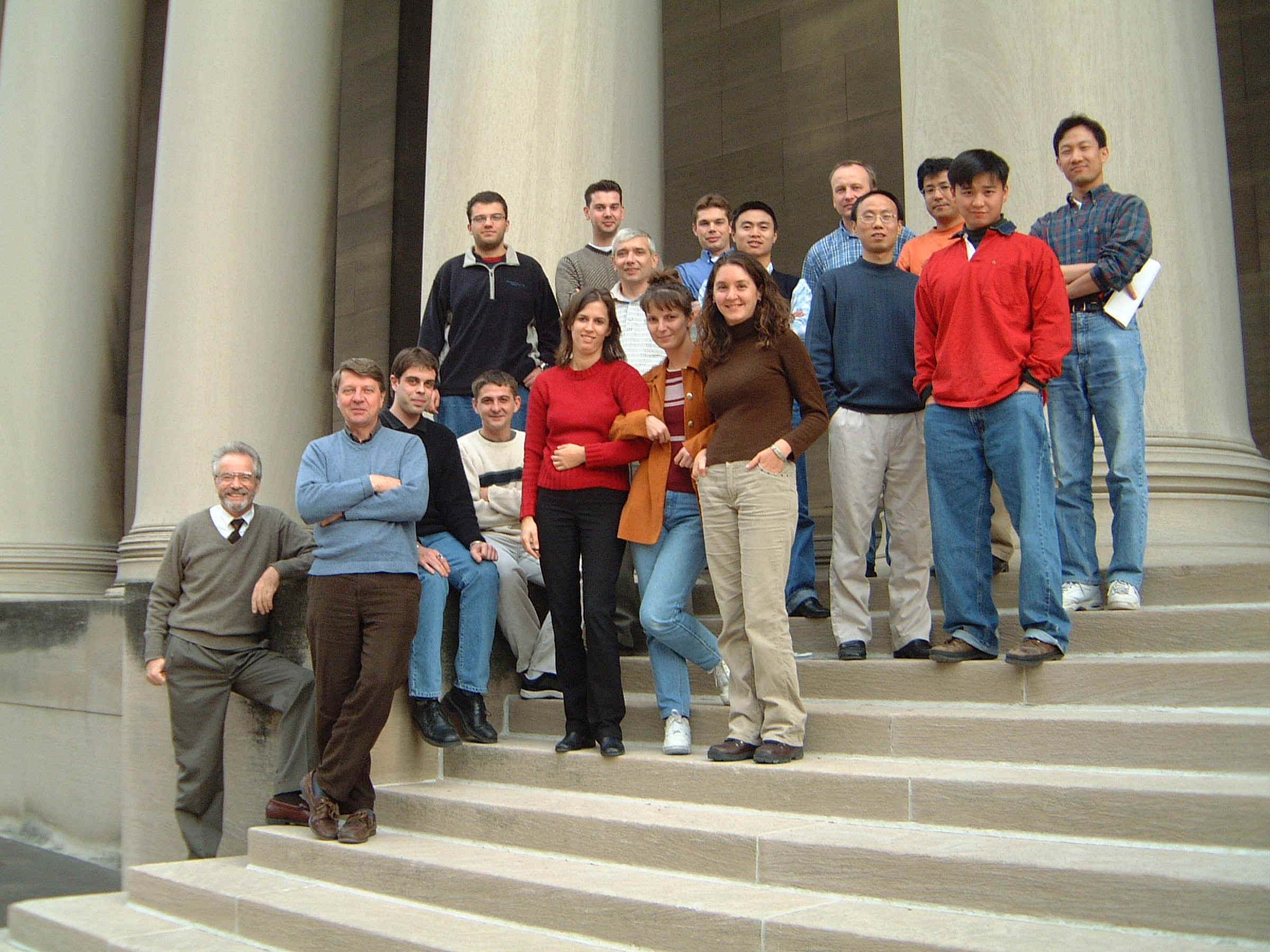![]()
Modern synthetic polymer chemistry is directed toward preparation of specialty polymers and advanced materials for new applications such as advanced microelectronics, optics, ceramics, materials for energy conversion, membranes, composites, biomaterials, etc. Control of various parameters of polymer architecture such as degree of polymerization, polydispersity, functionality and chain microstructure is extremely important in the synthesis of new specialty polymers, because physical and chemical properties of novel polymers are structure dependent. Macromolecular engineering provides the synthetic route to these polymers with well-defined structures.Our research is focused in two areas of macromolecular engineering, preparation of new block, graft and gradient copolymers via living and controlled polymerization and synthesis of novel organometallic polymers. The perfect control of the polymer microstructure is possible in living systems, where chain-breaking reactions such as transfer and termination are absent. However, it is possible to prepare well-defined polymers and block copolymers in systems with small contribution of chain breaking reactions by careful manipulation of various reaction conditions. We study mechanisms of the reactions involved in the controlled/living radical and carbocationic polymerizations. When growing radicals are in dynamic equilibrium with either persistent organometallic radicals or with labile covalent species such as alkoxyamines, then controlled radical polymerization is accomplished. Most recent approaches are based on the atom transfer radical polymerization (ATRP) catalyzed by transition metals.ATRP of styrenes, dienes, (meth)acrylates and other vinyl monomers in the presence of redox active transition metal compounds provides polymers with molecular weights 200< Mn<200,000 and predetermined by the Æ[M]/[I]o ratio as well as with very low polydispersities (Mw/Mn<1.05). Polymers are formed quantitatively either in bulk or in solution. ATRP allows synthesis of polymers with new topologies, compositions and funtionalities:The research in organometallic polymers is directed toward the synthesis and characterization of new materials with novel properties and potential application in microelectronics as photoresists, nonlinear optical materials, and as ceramics precursors. In the area of polysilanes we have developed several new synthetic approaches to well-defined polymers with improved control of the macromolecular structure. For example, the ring opening polymerization of strained cyclotetrasilanes, unique in controlling molecular weights and tacticities of polysilanes, has been used to prepare new block copolymers based on polysilanes. These copolymers are first polysilane based materials that are microphase separated at a nanoscale. Polyphosphazenes form another class of inorganic polymers with various applications as advanced biomedical, optoelectronic and specialty materials. Our group has succeeded in preparation polyphosphazenes with well-defined structures and first block copolyphosphazenes by catalyzed polymerization of phosphoranimines under very mild conditions. Most recent efforts are on the preparation of well-defined polymers with terminal functionalities and block copolymers between inorganic and organic polymers.
Selected Publications:
K. Matyjaszewski. T.E. Patten and J. Xia, Controlled/Living Radical Polymerization. Kinetics of the Homogeneous Atom Transfer Radical Polymerization of Styrene, J. Am. Chem. Soc. 119, 674 (1997).
E. Fossum, K. Matyjaszewski, S.S. Sheiko and M. Moeller, Morphology of Polystyrene-block-Poly(methylphensylsilylene), Macromolecules, 30 1765 (1997).
K. Matyjaszewski, Cationic Polymerizations: Mechanisms, Synthesis and Applications, Marcel Dekker, New York (1996).
T.E. Patten, J. Xia, T. Abernathy and K. Matyjaszewski, Polymers with Very Low Polydispersities from Atom Transfer Radical Polymerization, Science, 272, 866 (1996).
D. Greszta and K. Matyjaszewski, Mechanism of Controlled/Living Radical Polymerization of Styrene in the Presence of Nitroxyl Radicals. Kinetics and Simulations, Macromolecules, 29 7661 (1996).
S.G. Gaynor, S. Edelman and K. Matyjaszewski, The Synthesis of Branched and Hyperbranched Polystyrenes, Macromolecules, 29 1079 (1996).


Site maintained by Karl E. Kauffmann
Email me at kk2k@ironwise.chem.cmu.edu
